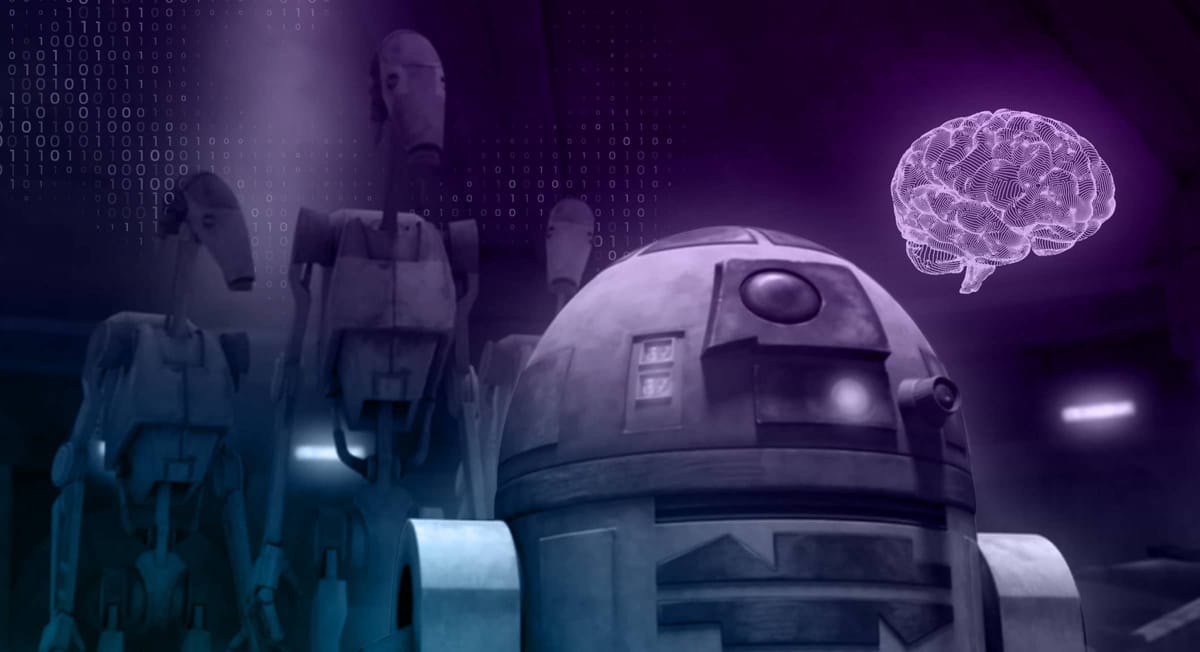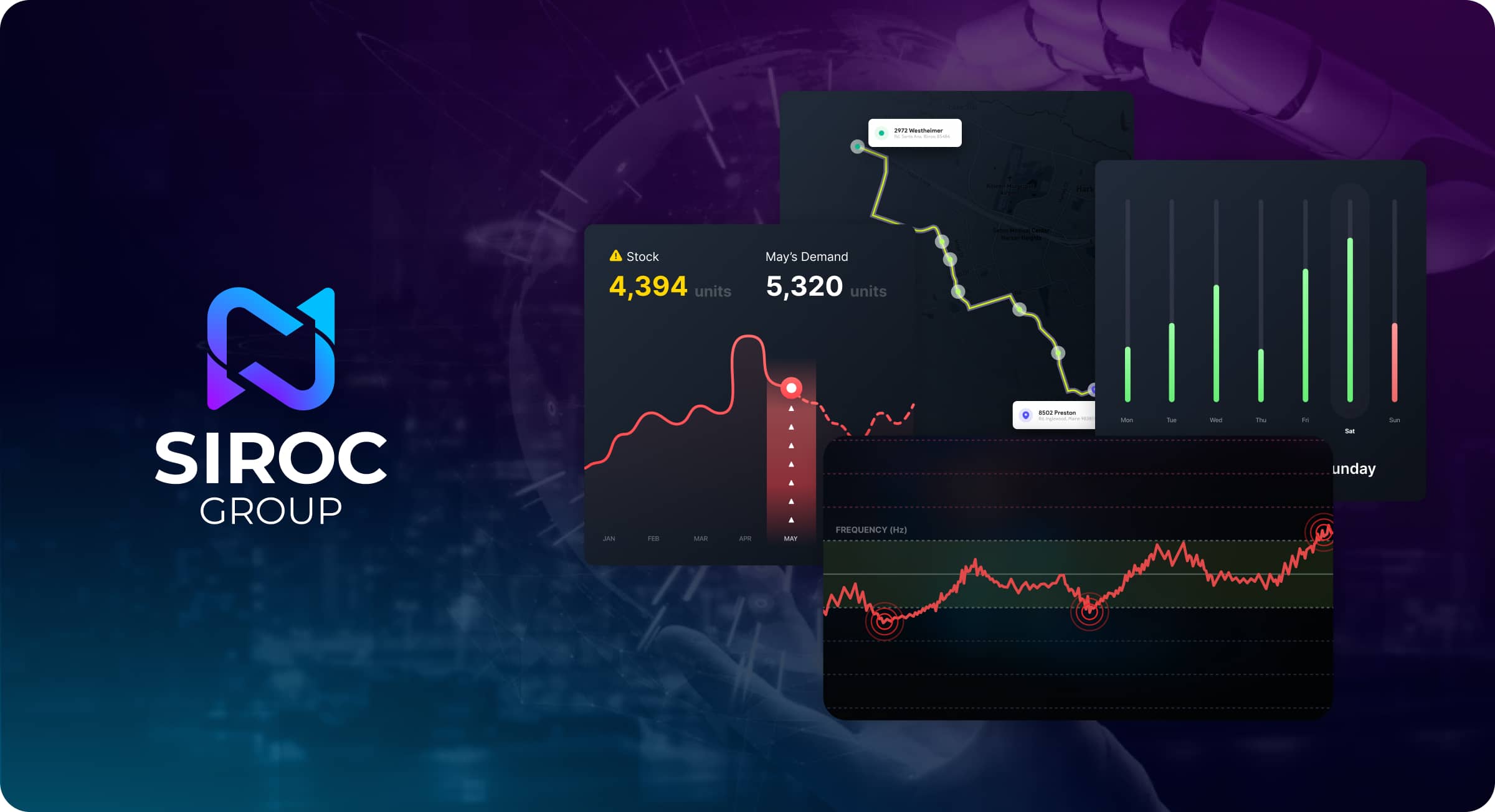AI Explained Through ‘Star Wars: The Clone Wars’

This blog delves into some of the most common AI indices that capture public interest, such as the adoption and performance of AI, how the public perceives it, and the crucial role of standards and governance in this field. It also explores how AI intersects with human creativity. To provide a unique perspective, I compare these AI indices to scenarios from "Star Wars: The Clone Wars." This parallel offers an intriguing look at AI development and public perception, drawing meaningful insights from the beloved series.
Smart AI Vs Dumb AI: Which one adapts and learns?
The series of Clone Wars does a good job of explaining how R2-D2 is smart AI, while battle droids are dumb AI. Smart AI systems show greater flexibility and can learn and solve problems which makes them more effective in complicated situations than dumb AIs that are not adaptive enough for dynamic environments and have no higher-level reasoning ability. This distinction is not only restricted to the Clone Wars series but also offers important perspectives on what AI can or cannot achieve in our lives.

R2-D2 serves as a classic case of intelligent AI. This Astromech (Droid designed to repair starships) droid has outstanding capabilities to solve problems, adjust to new situations, and take initiative. In Duel of the Droids, R2-D2 saves Anakin Skywalker’s crew from danger by undermining their enemies’ plans. R2-D2’s cleverness and resourcefulness have made him an invaluable partner during various missions throughout the series: Season 1, Episode 7 (“Duel of the Droids”), and others.
The Separatist Army Battle Droids demonstrate dumb AI. These are mass-produced robots that lack cognitive ability, meaning they respond to simple orders without considering anything else going on around them. Season 1, Episode 1 (“Ambush”) exposes tactical inadequacies in droids as they become engaged in combat with Jedi Master Yoda who employs some crafty moves against them.
Can AI Outperform Humans in Every Task?
AI may excel in many areas, but it still falls short when it comes to human creativity, intuition, and thinking outside the box. This contrast is vividly illustrated in the "Clone Wars" series. Take Season 1, Episode 5, "Rookies," for instance. This episode clearly shows how human ingenuity surpasses the rigid and predictable behavior of droids.

In "Rookies," a group of rookie troopers find themselves stationed at a remote listening post on the Moon Rishi, a crucial defensive site for the Republic. Suddenly, the Separatist droid army launches an assault on the post. The rookies, under the leadership of Captain Rex and Commander Cody, must defend their position despite being outnumbered. What sets these troopers apart from the droids includes several key attributes.
Intuition and Judgment: Unlike the B1 battle droids, which are bound by inflexible programming, the clones rely on their instincts to sense danger and make swift decisions under pressure. They show strategic thinking and leadership, especially in their efforts to reclaim their outpost.
Emotional Resilience and Motivation: The troopers' determination to protect each other and their commitment to the Republic drive them to fight beyond their physical limits. Their emotional depth and resilience inspire them to take risks and approach challenges creatively under stress.
Ethical Decision-Making: Humans have the capacity for ethical judgments that extend beyond programmed directives. For instance, the troopers choose to risk their lives to send a distress signal to the Republic fleet, demonstrating a profound sense of duty and morality.
Can AI Make People More Productive and Improve Work Quality?
Integrating AI into the workplace not only boosts efficiency but also allows human workers to apply their skills and ingenuity to tasks that require critical thinking and innovation.
For example, in “The Clone Wars," advanced droids often demonstrate superior performance, significantly boosting productivity and efficiency on the battlefield.
For instance, in Season 1, Episode 1, "Ambush," battle droids are deployed in massive numbers to overwhelm Jedi Master Yoda. These droids operate tirelessly, executing large-scale attacks with precision and coordination that human soldiers can't match.

Similarly, advanced training droids used in clone trooper boot camps elevate training quality. Featured in Season 3, Episode 1, "Clone Cadets," these droids can simulate a variety of combat scenarios with remarkable accuracy, preparing clones more effectively than human trainers alone.
Astromech droids like R2-D2 consistently highlight AI's role in enhancing mission efficiency. In Season 5, Episode 2, "A War on Two Fronts," R2-D2’s multitasking and quick problem-solving skills significantly aid the mission, showcasing how AI can improve productivity and work quality.
Tactical droids, such as the T-series seen in Season 2, Episode 4, "Senate Spy," are designed for battlefield strategy and logistics. They process vast amounts of data to make strategic decisions, often outsmarting human commanders.

These examples from "The Clone Wars" show how AI and droid technology frequently surpass human capabilities in specific tasks. In the real world, AI excels in data processing, pattern recognition, and performing repetitive or hazardous tasks, making humans more productive and enhancing the quality of work.
Do AI Models Need Better Evaluation?
The lack of standardized benchmarks for evaluating large language models (LLMs) is a significant concern in the AI community. This contrast between human ability and droid programming is vividly shown in the Clone Wars series.
This is exemplified in Season 1, Episode 5, "Rookies." The absence of a standardized AI model in the Clone Wars led to operational inefficiencies, strategic disadvantages, and increased vulnerability. Standardizing AI across droid models could have potentially mitigated these issues, resulting in a more formidable and cohesive droid army for the Separatists. This highlights the importance of consistency and integration in AI systems, a concept applicable to real-world AI and robotics development.

Absence of Coordination and Continuity
There were frequent mismatches among different types of droids, leading to a lack of coordination and efficiency. Basic Battle Droids, known for being clumsy and less intelligent, were often defeated despite their numbers. This is evident in Season 5, Episodes 1, 2, and 4. Advanced droids, though more capable, did not always integrate seamlessly with simpler models, creating gaps in strategic execution and battlefield performance, as seen in Season 2, Episodes 6 and 14.
Operational Inefficiency
Operational inefficiencies were common due to the lack of intelligence and autonomy in basic B1 battle droids. An example is found in Season 1, Episode 1, "Ambush," where Jedi Master Yoda easily outsmarts numerous B1 battle droids due to their simplistic programming.
Increased Vulnerabilities
- Hostile Attacks: Simple programming made it easy to trick or manipulate droids. In "Rookies," clone troopers deceive B1 battle droids using basic tactics.
- Data Poisoning: The Separatists' reliance on large data volumes for tactical decisions exposed them to data poisoning and misinformation. Republic forces exploited these gaps in "Senate Spy," Season 2, Episode 4.
- Security Risks: Tactical droids were high-value targets, and their destruction often led to significant setbacks for the Separatists. This tactic is demonstrated in Season 5, Episode 2, "A War on Two Fronts," where destroying a tactical droid disrupts Separatist operations.
Is Global Anxiety About AI Growing?
Across the globe, there's an increasing awareness of AI's potential impact, which has sparked considerable apprehension about its implications. In "The Clone Wars," this anxiety was well-founded due to the inherent risks and ethical dilemmas associated with AI. While droids provided strategic advantages, their unpredictability, potential for malfunction, and ethical concerns raised significant worries. These episodes effectively highlighted such concerns, mirroring the broader societal anxieties about AI in the real world.

There are several reasons behind this anxiety:
Unpredictability and Malfunction: Battle Droids, particularly the B1 series, were notorious for their malfunctions and erratic behavior, leading to both humorous and hazardous situations. Their inability to reason often caused operational failures, as seen in Season 1, Episode 5, "Rookies," where clone troopers easily outsmarted the B1 battle droids.
Ethical Concerns: The debate over using AI in warfare is fueled by ethical issues, especially the dehumanization of conflict. The ease with which droids could be destroyed, as opposed to the lives of organic soldiers, presented significant moral dilemmas. Season 4, Episode 10, "Carnage of Krell," delves into these moral and psychological issues.
Security Risks: The threat of security breaches was a constant concern, given that droids could be hacked or reprogrammed. This fear was justified by instances where droids turned against their side, such as in Season 3, Episode 12, "Nightsisters," where Asajj Ventress reprogrammed battle droids.
In Conclusion, these themes highlight the intricate nature of AI development and its profound societal impact. We see the critical role of sophisticated, flexible AI systems, the potential for AI to boost productivity and elevate work quality, and the necessity for solid governance and ethical guidelines. Missteps and inadequate oversight can introduce significant risks and vulnerabilities. Thus, it’s crucial to approach AI integration with a balanced view, ensuring ethical and safe development standards are established. As a parting thought from Season 3, Episode 18: "Adaptation is the key to survival."
I hope you enjoyed reading this as much as I enjoyed writing it. As a Star Wars fan and an AI enthusiast with both excitement and concern, it was a true passion for me to write it. May the force be with you!
About the Author

Noori Mohammad is a distinguished cybersecurity expert with over 25 years of experience in the field. She holds a master's degree in cybersecurity, along with a CISSP certification and numerous other credentials. Noori has led cybersecurity initiatives at some of the world's leading organizations, including Microsoft, IBM, Citibank, Royal Bank of Canada, ABSA, First National Bank, and Tata Consultancy Services. She is now a partner at SIROC, where she leads the cybersecurity division.
About SIROC
SIROC Group is home to several innovative companies across Europe that provide advanced technology solutions, advisory services and strategic execution enablement to many customers across the globe. Our expertise spans across a range of areas including AI-driven Cybersecurity, Secure Application Development, Cloud Infrastructure Management, Workflow Automation and Advanced Data Analytics.

With a strong focus on effective execution, innovation and a commitment to quality, SIROC Group is at the forefront of industry trends and standard practices, and we welcome the opportunity to work with businesses looking to leverage the latest technology to drive growth, transformation and achieve their strategic objectives.
All images and properties related to Star Wars, including content from Star Wars: The Clone Wars, are the intellectual property of Disney. The images used in this blog post are for illustrative and educational purposes only, and all rights to these images and properties belong to Disney.
